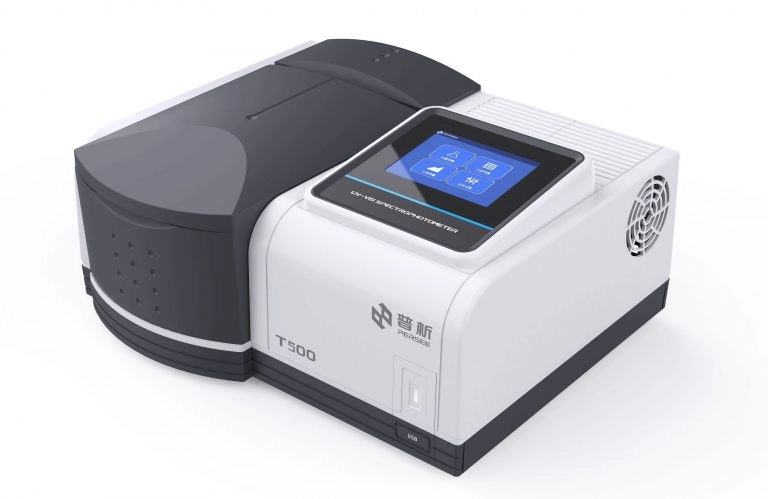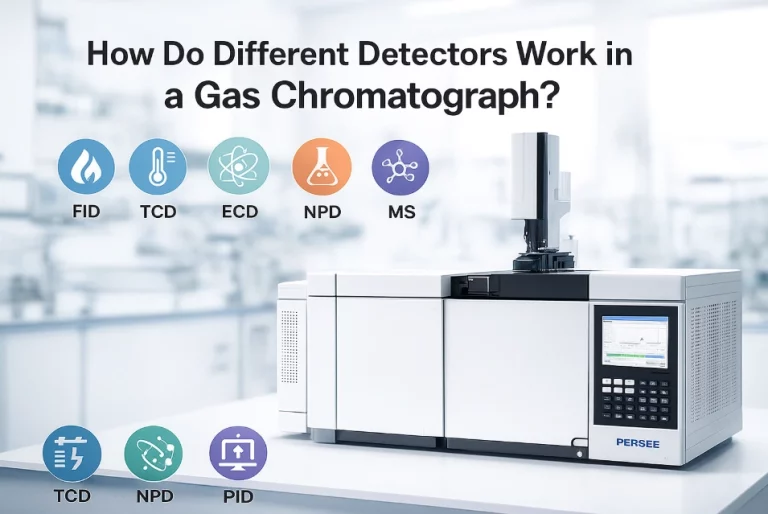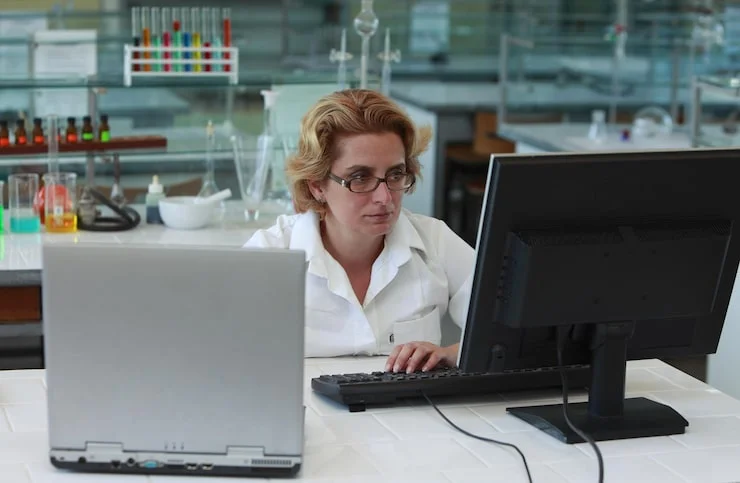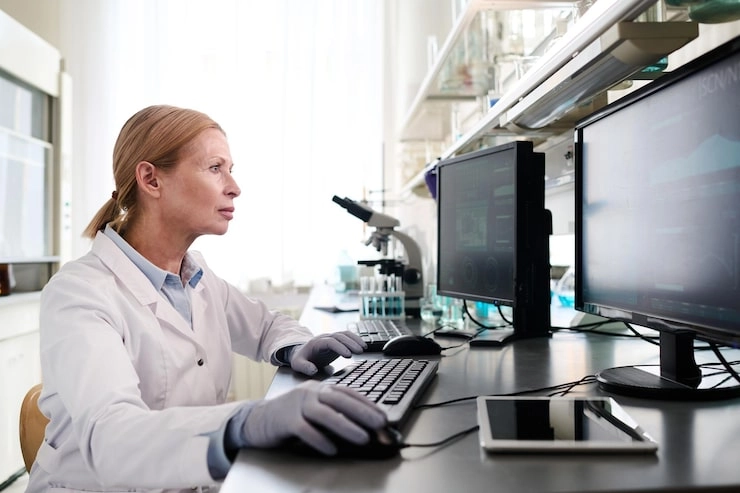
Headspace gas chromatography (HS-GC) is a widely adopted technique for analyzing volatile and semi-volatile compounds in complex matrices. However, traditional static headspace sampling often presents challenges that hinder efficiency and accuracy. As analytical demands increase across industries such as food safety, environmental monitoring, and pharmaceuticals, it’s essential to explore both the limitations of conventional methods and the potential of advanced alternatives like dynamic headspace sampling.
Challenges in Static Headspace Sampling
Static headspace sampling relies on achieving equilibrium between the sample matrix and its vapor phase within a sealed vial. While this method is simple and requires minimal hardware, it can be problematic under certain conditions.
Matrix Complexity and Its Influence on Volatile Recovery
Complex matrices—such as those found in food, biological tissues, or polymers—can significantly affect the recovery of volatile analytes. There have been several instances recently when my groups have been faced with challenges in which static headspace has not been able to deliver an analytical solution or has taken an inordinate amount of time to optimize. These matrices may retain volatiles more strongly or cause unpredictable partitioning behavior.
Difficulties with Polar Analytes in Aqueous or Solid Matrices
Polar analytes often interact strongly with water or solid-phase components, making them difficult to extract into the gas phase. Solid matrices, polar analytes in polar matrices, volatile matrices, very low analyte concentrations. all contribute to poor recoveries during static sampling.
Limitations When Dealing with Low Volatility Compounds
Compounds with low vapor pressures do not readily partition into the headspace at standard conditions. This results in low sensitivity unless extreme measures such as high temperatures are applied, which may not always be feasible due to thermal degradation risks.
Impact of Relative Response Factors on Quantification Accuracy
Quantitative analysis using HS-GC can suffer from inaccuracies due to differing relative response factors among target compounds. Less volatile analytes and issues with relative response factors (or relative extraction factors) can affect quantification accuracy.
Optimization Parameters in Static Headspace Techniques
Despite these challenges, several parameters can be adjusted to enhance performance in static HS-GC.
Sample-to-Headspace Volume Ratio Adjustments
Modifying the ratio between sample volume and vial headspace can influence equilibrium dynamics. A smaller headspace typically leads to higher analyte concentrations in the vapor phase but may also increase pressure and risk saturation effects.
Temperature and Equilibration Time Considerations
Increasing vial temperature accelerates volatilization while longer equilibration times allow for more complete partitioning. However, excessive heating can degrade thermally sensitive compounds.
Agitation Intensity and Its Role in Analyte Partitioning
Agitation promotes mass transfer between phases by disrupting boundary layers. Equilibration time, temperature, and agitation intensity are common optimization parameters that influence reproducibility and sensitivity.
Effects of Salting Out and Co-solvent Addition
Salting out reduces solubility of volatiles in aqueous samples, pushing them into the gas phase. Just a word on salting out: We discovered a helpful table describing salting out efficiency. Co-solvents may also be used to modify solvent polarity and promote analyte release. We are investigating co-solvents promoting analyte partitioning into the headspace.
Injection Time and Loop Volume Calibration
Loop-based injection systems require careful calibration of injection time and loop size to ensure consistent sample sample introduction without breakthrough or carryover issues. injection volume (actually injection time as we have a loop sampler on our instrument).
Exploring Dynamic Headspace Sampling as an Alternative
When static methods fall short, dynamic head headspace sampling (DHS) offers an effective alternative for complex analytical problems.
Basic Basic Principles of Dynamic Headspace Extraction (DHS)
Dynamic headspace sampling (DHS) uses a constant flow of purge gas through the headspace of a sample vial, continuously extracting volatile compounds. This continuous purging enables ongoing release of volatiles from the sample matrix into the gas phase.
Benefits of Continuous Purging over Static Equilibrium
Unlike static equilibrium systems that rely on equilibrium conditions, DHS actively removes analytes from the vial atmosphere via purging. The dynamic technique does not rely on a fixed equilibrium within a closed system. This enhances sensitivity by allowing more complete extraction over time.
Adsorbent Tube Selection for Target Compound Trapping
Proper adsorbent choice is crucial for efficient trapping during DHS.
Multi-bed Sorbent Tubes for Broad Analyte Range
Adsorbent tubes with multiple packings are available, which takes some work out of this process. These tubes capture a wide range of compound polarities and volatilities without requiring frequent changes or method adjustments.
Dry Purge Optimization for Aqueous Samples
The dry purge stage of the process may also require optimization; however this tends only to be necessary when using aqueous-based matrices. Proper dry purging prevents water interference during thermal desorption.
Advanced Variants of Dynamic Headspace Techniques
To further improve recovery from challenging samples, innovative variants like FET and MVM are gaining attention.
Full Evaporative Technique (FET) for Enhanced Recovery
An adaptation of any headspace sampling technique is known as the Full Evaporative Technique (FET). In FET, both the sample and matrix are completely evaporated inside the vial before collection onto an adsorbent trap. This technique is particularly useful for volatile compounds in difficult-to-analyze matrices.
Application Scenarios for FET in Complex Matrices
This approach is ideal when matrix interferences hinder traditional partitioning—such as viscous liquids or semi-solid foods—allowing full liberation of volatiles regardless of their affinity to matrix components.
Multi Volatile Method (MVM) for Comprehensive Profiling
A further interesting technique is the Multi Volatiles Method (MVM), which represents an excellent way to ensure that all volatile compounds are identified.
Sequential Extraction Strategies Using MVM
MVM enables stepwise extraction at different temperatures or flow rates to sequentially release light through heavy volatiles—ideal for comprehensive profiling tasks like flavor fingerprinting or forensic analysis.
Instrumentation Considerations for DHS Implementation
Implementing DHS requires specialized hardware capable of handling sorbent traps and thermal desorption workflows efficiently.
Thermal Desorption Unit Configuration and Parameters
These units heat sorbent tubes rapidly while transferring desorbed analytes into GC columns under controlled conditions.
Cold Trapping Techniques to Improve Peak Shape and Sensitivity
Cold-trapping techniques, such as cryo-trapping, can enhance chromatographic efficiency by preventing peak broadening and improving sensitivity. This technique focuses analytes at the column heads before separation, ensuring sharper peaks.
Automation Capabilities and Workflow Efficiency
The equipment used in DHS is fully automated, allowing experiments to be conducted unattended and reducing labor costs while increasing reproducibility. Automation reduces labor costs while increasing reproducibility—a critical feature for high-throughput labs.
Analytical Strategy Development Beyond Traditional Approaches
Modern method development must address multivariate interactions among parameters while minimizing experimental burden where possible.
Experimental Design to Manage Interdependent Variables
As multiple variables interact non-linearly during HS-GC optimization, factorial designs or response surface methodologies help identify optimal settings effectively. we have had to use experimental design approaches to deal with the many interactive variables.
Leveraging Generic Methods to Minimize Optimization Burden
discussions led to possibilities of dynamic headspace extraction (sampling) with thermal desorption. Generic methods based on DHS-MVM offer robust performance across diverse samples without extensive tailoring per case study.
Common Misconceptions and Pitfalls in Headspace GC Method Development
Awareness of common errors helps avoid inefficiencies during analytical development phases.
Over-reliance on Static Approaches for All Sample Types
Static HS-GC is often used by default even when unsuitable—for example with low-volatility targets or reactive matrices—leading to poor outcomes unnecessarily.
Underestimating the Role of Matrix Effects on Reproducibility
Matrix interactions can drastically alter extraction behavior; ignoring them results in irreproducible quantification even under seemingly identical conditions.
Misalignment Between Analytical Goals and Sampling Technique
Choosing HS-GC simply due to familiarity rather than suitability may compromise detection limits or profiling depth required by specific applications like aroma analysis or contaminant screening.
PERSEE: A Reliable Manufacturer of Analytical Instruments
When implementing advanced HS-GC techniques such as DHS-MVM or FET, selecting reliable instrumentation becomes crucial—and PERSEE stands out as a trusted provider globally recognized for quality innovation across analytical platforms.
Overview of Beijing Purkinje General Instrument Co., Ltd.
Beijing Purkinje General Instrument Co., Ltd., also known as PERSEE Analytical Instruments, is headquartered in Beijing’s Pinggu District with decades-long expertise spanning spectroscopy, chromatography, X-ray solutions, lab instruments—and more recently—automated GC platforms tailored for complex workflows including dynamic headspace integration.
Commitment to Quality with ISO Certifications
PERSEE maintains rigorous quality standards validated through ISO certifications ensuring consistency across product lines from R&D through manufacturing stages.
Global Reach with Diverse Application Areas
Their instruments serve sectors including Education, Pharmaceutical & Life Science, Food & Beverage, Environment, Agriculture, among others—making them well-suited partners for laboratories worldwide.
Product Portfolio Including Chromatography Solutions Like M7 & G5GC
The G5GC series offers flexible configurations ideal for advanced GC applications while models like M7 integrate seamlessly with autosamplers supporting both static and dynamic modes.


Summary of Key Insights
While static HS-GC remains valuable under controlled conditions, its limitations become apparent when dealing with polar matrices or trace-level targets. Dynamic approaches such as DHS-FET or DHS-MVM offer enhanced flexibility, automation potential, and broader application scope—especially when supported by robust instrumentation like PERSEE’s G5GC series integrated with thermal desorption capabilities.
FAQs:
Q1: What makes dynamic headspace sampling better than static?
A: Dynamic techniques continuously purge volatiles from samples rather than relying on equilibrium states. This allows better recovery from complex matrices especially when dealing with low volatility compounds or trace-level detection needs.
Q2: Can I automate dynamic headspace workflows?
A: Yes! Many modern systems including those offered by PERSEE support full automation—from sample loading through thermal desorption—greatly improving throughput without sacrificing precision, this particular equipment is automated.
Q3: Is it necessary to use cryogenic trapping during thermal desorption?
A: While not mandatory in every case, cryogenic trapping significantly improves peak shape by concentrating analytes before GC separation begins—enhancing both sensitivity and resolution. Cryogenic trapping is optional, depending on the analytical needs.










